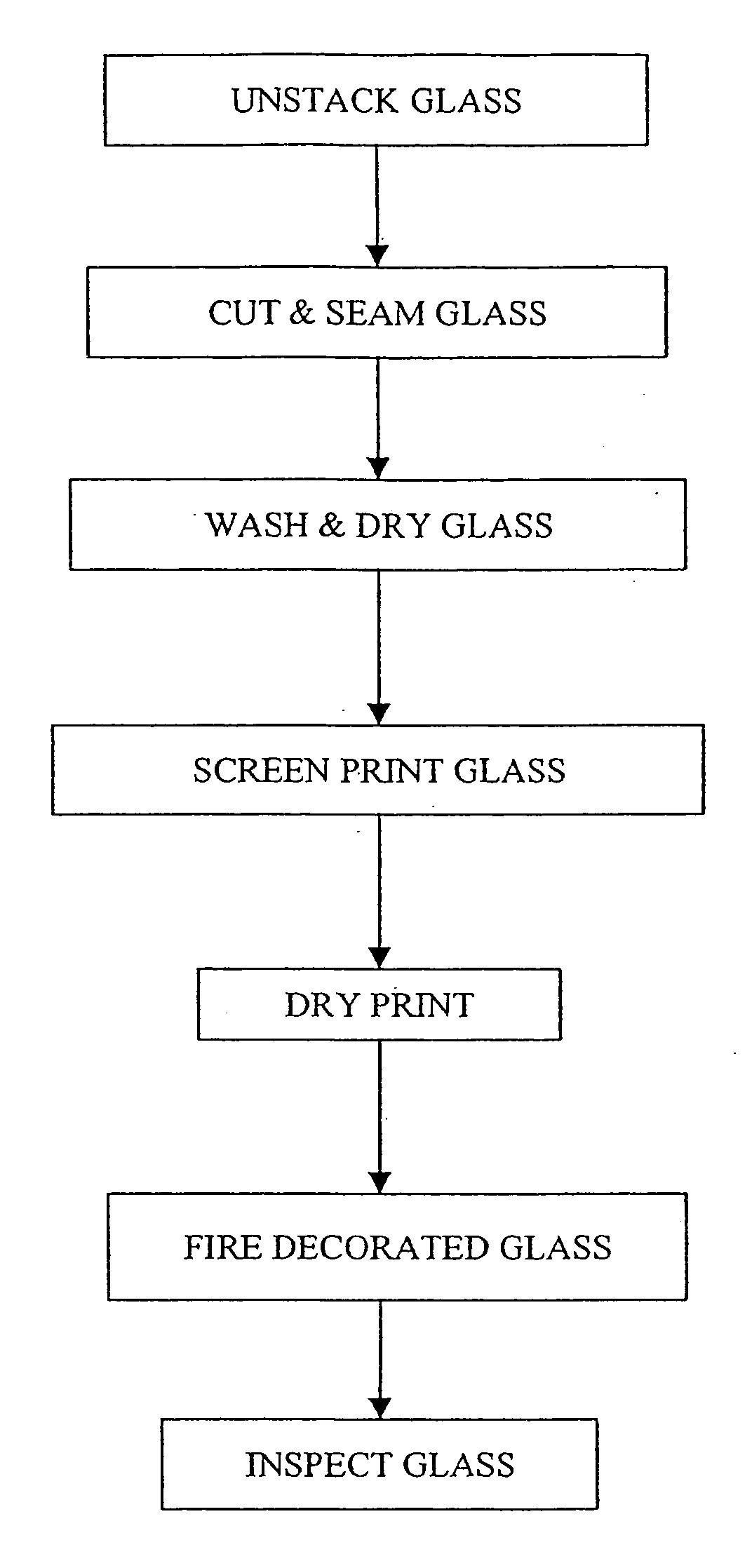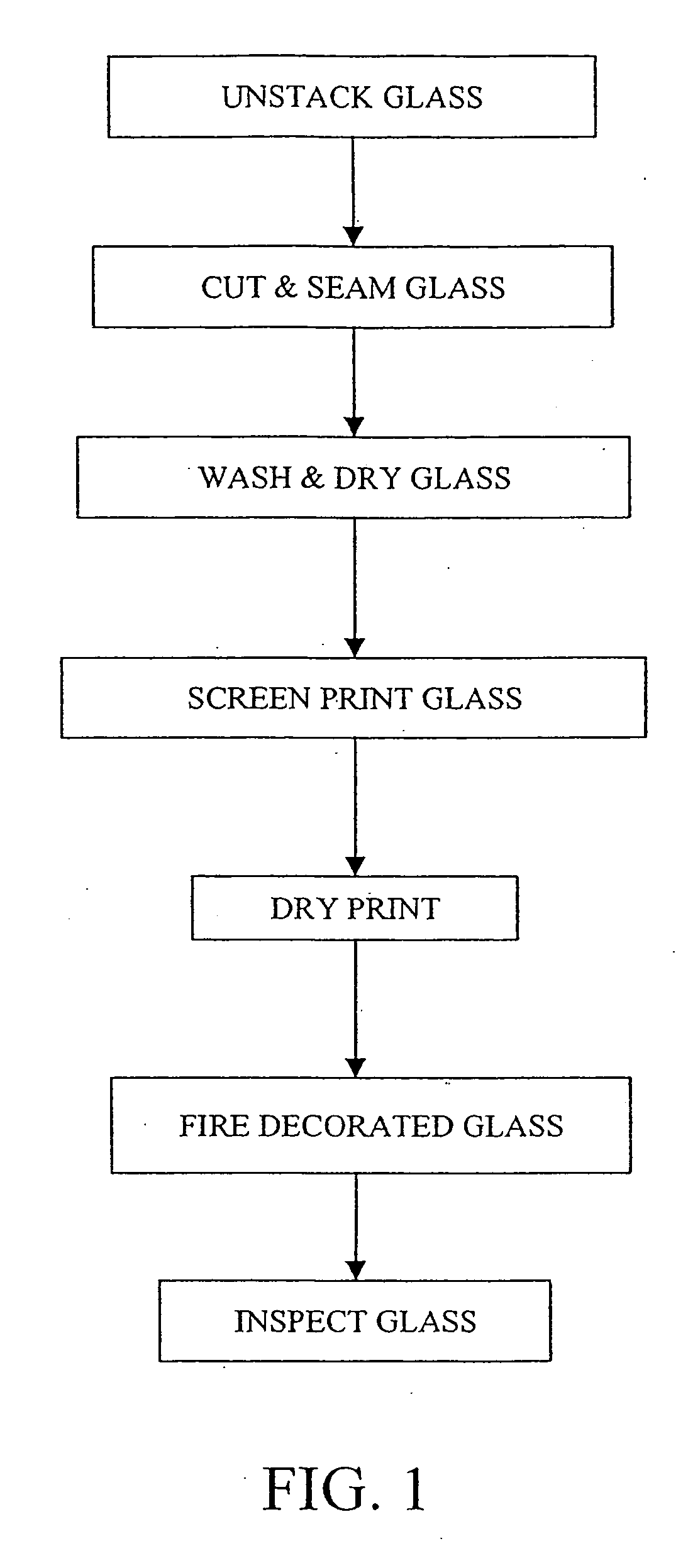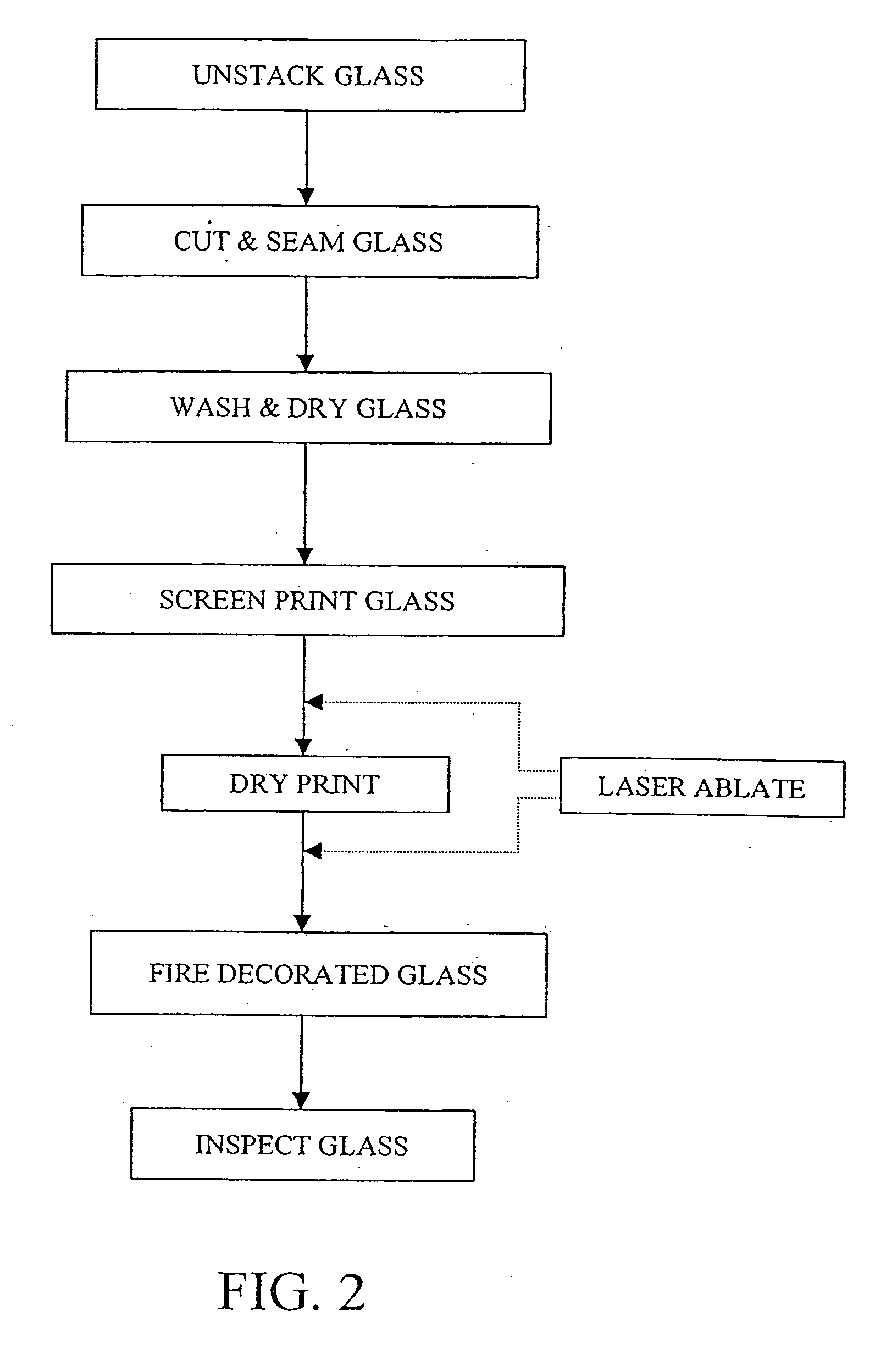Screen printing process
a screen printing and process technology, applied in the direction of printing, glass reforming apparatus, glass tempering apparatus, etc., can solve the problems of significant strength degradation of glass substrate, similar difficulties may be experienced in glass substrates in the architectural, container, lighting and other industries, and are not economically feasible for mass production
- Summary
- Abstract
- Description
- Claims
- Application Information
AI Technical Summary
Benefits of technology
Problems solved by technology
Method used
Image
Examples
Embodiment Construction
[0019] In accordance with the present invention, many substrates may be coated for functional or decorative reasons with various coatings. By screen printing a coating on the substrate and then selectively removing portions of the screen printed coating with a laser beam, the substrate can be marked, decorated, serialized or patterned with a simple operation. For example, automotive glass windshields, backlights and side windshields are routinely decorated around their perimeter for functional and decorative reasons with a band of black enamel. A portion of the black enamel may be selectively removed with a laser beam, allowing serialization of each piece of glass prior to firing. Similarly, glass containers are commonly decorated with glass enamels. Marking by selective removal of a portion of the enamel with a laser prior to firing may be used to enhance the decoration as well as to include bar coding or serialization on the container. The same process can be used to mark metals, ...
PUM
| Property | Measurement | Unit |
|---|---|---|
| weight percent | aaaaa | aaaaa |
| weight percent | aaaaa | aaaaa |
| weight percent | aaaaa | aaaaa |
Abstract
Description
Claims
Application Information
 Login to View More
Login to View More - R&D
- Intellectual Property
- Life Sciences
- Materials
- Tech Scout
- Unparalleled Data Quality
- Higher Quality Content
- 60% Fewer Hallucinations
Browse by: Latest US Patents, China's latest patents, Technical Efficacy Thesaurus, Application Domain, Technology Topic, Popular Technical Reports.
© 2025 PatSnap. All rights reserved.Legal|Privacy policy|Modern Slavery Act Transparency Statement|Sitemap|About US| Contact US: help@patsnap.com



